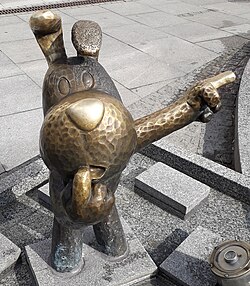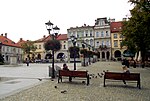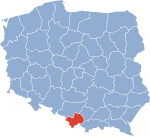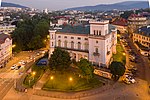Sfera (mall)
Buildings and structures in Bielsko-BiałaPolish building and structure stubsShopping mall stubsShopping malls established in 2001Shopping malls in Poland ... and 1 more
Tourist attractions in Silesian Voivodeship

Sfera is the largest mall in Bielsko-Biała, Poland housing about 120 shops, music club, cinema (Helios) and supermarket. Area: 38000 square meters. The first phase of Sfera was opened on 6 December 2001 at the site of several former textile factories, and in 2009 Sfera was connected with Sfera 2 and the area was enlarged to over 130000 square meters. In 2011, a monument to Bolek and Lolek was erected outside the mall.
Excerpt from the Wikipedia article Sfera (mall) (License: CC BY-SA 3.0, Authors, Images).Sfera (mall)
Mostowa, Bielsko-Biała Biała Śródmieście
Geographical coordinates (GPS) Address Nearby Places Show on map
Geographical coordinates (GPS)
| Latitude | Longitude |
|---|---|
| N 49.826388888889 ° | E 19.048611111111 ° |
Address
Mostowa
43-300 Bielsko-Biała, Biała Śródmieście
Poland
Open on Google Maps










